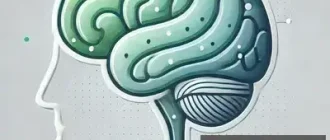As every parent knows, every child is special in their own unique way. Children grow and develop at different rates, with each achieving their individual milestones at different ages. However, as a parent, it’s only natural to want to understand whether your child’s development is on track or if there might be early signs of a potential issue.
We will navigate through an often misunderstood topic—mental retardation. While this term has been largely replaced by the more accurate phrase “intellectual disability,” it’s essential to recognize that a child’s cognitive development may not be following the typical pattern.
Below-average intelligence or mental ability
Intellectual Disability (ID), previously known as mental retardation, is characterized by below-average intelligence or mental ability and a lack of skills necessary for day-to-day living. It affects around 1% of the population, with 85% of those affected having mild intellectual disability. Individuals with ID often struggle with tasks like communication, problem-solving, and self-care. Diagnosis involves measuring the Intelligence Quotient (IQ) and adaptive behaviors. An IQ score of less than 70 to 75 is considered intellectually disabled. For instance, Earl Washington, who had an IQ of 69 and a mental age of 10, struggled with basic intellectual tasks and had difficulty comprehending complex circumstances.
Lack of skills necessary for day-to-day living
Mental retardation, now referred to as Intellectual Disability (ID), affects about 1% of the population and is characterized by below-average intelligence or mental ability, and a lack of skills necessary for day-to-day living. Signs of ID can appear during infancy or later on in childhood, and may include delays in reaching developmental milestones, such as crawling, walking or talking, difficulties in self-care tasks like dressing and feeding, and challenges in problem-solving and logical thinking. In some cases, children with severe ID may also experience other health problems, including motor skill impairment and sensory issues. Early identification and intervention can significantly improve outcomes for these individuals.
Delayed developmental milestones
Delayed developmental milestones are important indicators that a child may have intellectual disabilities, previously termed as mental retardation. These may include difficulty in mastering everyday activities such as crawling, walking, talking, dressing, and feeding themselves at an appropriate age. A child with an intellectual disability may also struggle with problem-solving and connecting actions with consequences. It is essential to monitor these developmental milestones and reach out to a specialist if any concerns arise. This enables early intervention, which can significantly improve a child’s adaptive behaviors and help them achieve their full potential.
Difficulty with communication
Intellectual disability (ID), previously referred to as mental retardation, affects around 1% of the population and is characterized by below-average intelligence, as well as limitations in adaptive behaviors. Communication difficulty is a common sign of ID observed in children, usually identified by delays in language skills such as talking late or having trouble speaking. With their reduced mental ability, those affected by ID often struggle to interact effectively with others and express themselves, impacting their overall communication abilities. With proper support and early intervention, however, most individuals with mild intellectual disability can lead relatively independent lives.
Inability to connect actions with consequences
One common sign of intellectual disability or mental retardation in children is the inability to connect actions with consequences. This cognitive impairment hinders the child’s understanding of cause and effect relationships, leading to difficulty in learning from experiences and adapting to new situations. For example, a child with this issue may repeatedly touch a hot stove despite experiencing pain or engage in harmful behaviors without realizing the negative consequences. Such limitations can have significant effects on the child’s social, emotional, and academic development, making it crucial for parents and educators to recognize the signs and provide appropriate interventions.
Behavior problems such as explosive tantrums
Behavior problems, such as explosive tantrums, are a common sign of intellectual disability (ID) in children. These emotional outbursts typically result from the child’s inability to connect actions with consequences, as well as difficulties with problem-solving and logical thinking. In cases of severe or profound ID, additional health issues like anxiety, motor skills impairment, and vision or hearing problems might contribute to these tantrums. Addressing these behavior challenges often involves a combination of tailored support and intervention, including behavioral therapy and establishing effective communication with the child. With appropriate treatment, children with ID can learn to manage their emotions and lead more independent lives.
Difficulty with problem-solving or logical thinking
One of the key signs of intellectual disability in children (formerly known as mental retardation) is difficulty with problem-solving or logical thinking. Affected children may struggle to understand cause and effect, draw appropriate conclusions from given information, or apply their knowledge in practical situations. For instance, they might have trouble understanding how to solve puzzles or adapt to new situations. Identifying and addressing these challenges early in a child’s life can contribute to a positive outcome; with the right support and interventions, many individuals with intellectual disabilities can develop essential life skills to live an independent and fulfilling life.
Impaired motor skills
Intellectual disability (ID), previously referred to as mental retardation, is characterized by below-average intelligence and a lack of skills necessary for daily living. In children with ID, motor skills impairment is often one of the main signs of their condition. Impaired motor skills may appear as delayed milestones, such as rolling over, crawling, or walking late. These children might also have difficulty with tasks like dressing, feeding themselves, and engaging in age-appropriate play activities. Early intervention and support can help children with ID and motor impairments to develop their skills and achieve increased independence.
Vision or hearing problems
Children with intellectual disabilities, formerly known as mental retardation, may often experience vision or hearing problems as part of their condition. These sensory impairments can further impact their ability to learn and adapt to their environment. Early identification is crucial in addressing these issues, as appropriate interventions can significantly improve the child’s quality of life. For instance, specialized teaching techniques, assistive devices, and medical treatments can help maximize their potential to communicate effectively, interact with others, and live independently. It is essential to consult with medical professionals for proper diagnosis and management of any vision or hearing concerns in children facing intellectual disabilities.
At the end…
In some cases, children with intellectual disability may also experience other health issues such as anxiety or autism. It is essential to diagnose and address these co-occurring conditions to provide comprehensive support and assistance for the child’s overall well-being and development.
About the Author
Reyus Mammadli is the author of this health blog since 2008. With a background in medical and biotechnical devices, he has over 15 years of experience working with medical literature and expert guidelines from WHO, CDC, Mayo Clinic, and others. His goal is to present clear, accurate health information for everyday readers — not as a substitute for medical advice.







